Food Aggression Dog Training Guide: A Comprehensive Approach to Managing and Resolving Food Aggression Issues
Food aggression is a common behavioral issue among dogs that can lead to tense situations in the household. When a dog displays aggressive behavior around food, it can be distressing for both the dog owner and others present. However, with the right training and guidance, it is possible to manage and resolve food aggression in dogs.
In this Food Aggression Dog Training Guide, we will provide you with a comprehensive approach to addressing food aggression issues in dogs. From understanding the root causes of food aggression to implementing effective training techniques, this guide will equip you with the knowledge and tools to create a safe and harmonious feeding environment for your beloved pet.
Food Aggression Dog Training Guide
Understanding Food Aggression
Food aggression is a behavioral issue in dogs characterized by aggressive behavior exhibited during feeding or when food is present. Dog owners need to understand the underlying causes, signs, and consequences of food aggression to effectively address and manage this problem.
What is Food Aggression?
Food aggression, also known as resource guarding, is a behavior where a dog displays aggressive behaviors, such as growling, snapping, or biting, in response to perceived threats or challenges to their food resources. Dogs with food aggression may become possessive of their food and exhibit defensive behaviors to protect it.
The Causes of Food Aggression
Food aggression can stem from a combination of genetic, environmental, and learned factors. Understanding the root causes can help in developing appropriate training strategies. Here are some common causes of food aggression:
- Instinctual Behavior: Dogs have natural survival instincts, and resource guarding, including food aggression, can be a result of their evolutionary history.
- Previous Negative Experiences: Dogs that have had past experiences of food scarcity, competition, or being bullied during mealtime may develop food aggression as a defense mechanism.
- Lack of Socialization: Insufficient exposure to other dogs or animals during the critical socialization period can contribute to the development of food aggression.
- Inconsistent or Harsh Feeding Practices: Inconsistent or unpredictable feeding routines, as well as harsh interactions during feeding, can trigger anxiety and defensive behavior in dogs.
Recognizing the Signs of Food Aggression
Dog owners must be able to recognize the signs of food aggression to address the issue promptly. Some common signs of food aggression include:
- Growling: Dogs may growl as a warning sign to keep others away from their food.
- Snapping or Biting: Food-aggressive dogs may resort to snapping or biting if they feel their food is being threatened.
- Stiff Body Language: Dogs with food aggression may exhibit a tense and rigid body posture while eating.
- Guarding Behavior: Dogs may guard their food bowl, treats, or other food resources by standing over them, curling their lips, or showing defensive body language.
Consequences of Untreated Food Aggression
If left untreated, food aggression can escalate and lead to several negative consequences:
- Risk of Injury: Food-aggressive dogs pose a risk of biting or attacking other animals or humans who come near their food, potentially resulting in serious injuries.
- Stress and Anxiety: Dogs with food aggression may experience heightened stress and anxiety during mealtime, which can impact their overall well-being and quality of life.
- Disrupted Household Dynamics: Food aggression can create tension and conflict within a household, especially if there are multiple pets or young children present.
- Limited Socialization Opportunities: Dogs with food aggression may have limited socialization opportunities with other animals, affecting their ability to interact positively with other dogs in various settings.
By understanding the underlying causes and recognizing the signs of food aggression, dog owners can take proactive steps to address this issue effectively. The following sections of this guide will provide detailed insights and strategies for managing and resolving food aggression in dogs, promoting a safe and harmonious feeding environment.
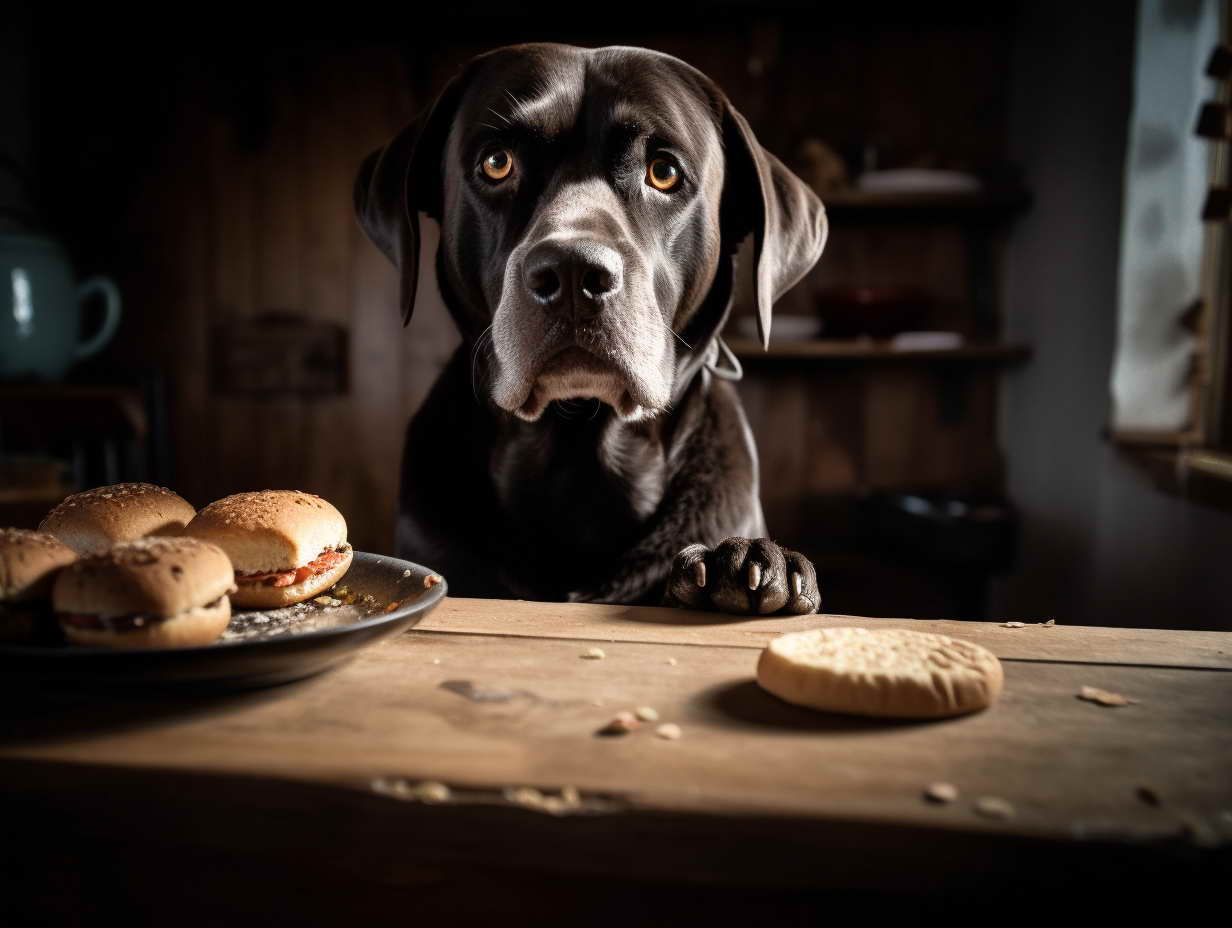
Assessing the Severity of Food Aggression
Before implementing a training program to address food aggression in dogs, it is crucial to assess the severity of the problem. Understanding the level of aggression exhibited by your dog and identifying triggers and aggravating factors can help tailor an effective training approach.
Evaluating the Level of Aggression
Assessing the level of aggression displayed by your dog during food-related situations can provide insights into the severity of the issue. Consider the following factors:
- Frequency: How often does your dog display aggressive behavior during feeding? Is it a consistent pattern or an occasional occurrence?
- Intensity: Evaluate the intensity of the aggressive behavior exhibited by your dog. Does it involve growling, snapping, or biting? How severe are the defensive actions?
- Context: Consider the context in which the aggression occurs. Does your dog only display food aggression when other animals or humans approach its food, or does it exhibit aggression even when it’s eating alone?
By carefully observing and evaluating these factors, you can determine the level of food aggression your dog exhibits, which will guide you in choosing the appropriate training techniques and interventions.
Determining Triggers and Aggravating Factors
Identifying the triggers and aggravating factors that contribute to food aggression in your dog is essential for effective management. Some common triggers and aggravating factors to consider include:
- Presence of Other Animals: Does your dog become more aggressive when other animals, such as other dogs or cats, approach its food?
- Proximity of Humans: Does your dog display heightened aggression when humans come near its food?
- High-Value Food: Does the level of aggression increase when your dog is given high-value food or treats?
- Feeding Time Routine: Are there specific elements of the feeding time routine that seem to trigger or worsen food aggression?
By identifying these triggers and aggravating factors, you can modify the feeding environment and implement strategies to manage and reduce food aggression in your dog effectively.
Remember, assessing the severity of food aggression and understanding the specific triggers and aggravating factors are crucial steps in developing a customized training plan. The subsequent sections of this guide will provide you with practical techniques and strategies to address food aggression based on the severity of the issue identified during the assessment.
Creating a Safe Feeding Environment
Establishing a safe and controlled feeding environment is essential when dealing with food aggression in dogs. By implementing measures that promote a calm and positive feeding routine, you can help alleviate your dog’s anxiety and reduce the likelihood of aggressive behavior during mealtime.
Separate Feeding Spaces
One effective strategy is to provide separate feeding spaces for dogs in multi-pet households. This ensures each dog has their own designated area where it can eat without feeling threatened or competing for food. Here are some tips for creating separate feeding spaces:
- Physical Separation: Use gates, barriers, or separate rooms to create distinct feeding areas for each dog. This prevents direct contact and reduces the potential for conflict.
- Personalized Feeding Stations: Provide individual feeding bowls or elevated feeding stations for each dog. This creates a sense of ownership and helps prevent resource guarding.
- Distance Between Feeding Areas: Ensure that the feeding areas are far enough apart to minimize visual and auditory stimuli that may trigger food aggression.
Implementing Consistent Feeding Schedules
Establishing a consistent feeding schedule can help reduce anxiety and promote a sense of predictability for your dog. Consistency in mealtime routines can also help alleviate the need for your dog to guard or become possessive of their food. Consider the following guidelines:
- Regular Feeding Times: Feed your dog at the same times each day to establish a routine. This helps your dog anticipate mealtime, reducing anxiety and the likelihood of aggressive behavior.
- Time-Limited Meals: Set a specific duration for mealtime. If your dog does not finish eating within a reasonable time, remove the food. This prevents prolonged guarding behaviors.
- Avoid Free-Feeding: Free-feeding, where food is constantly available, can contribute to resource guarding. Instead, offer meals at designated times and remove any uneaten food.
Using Food Puzzle Toys
Food puzzle toys can serve as a valuable tool in managing food aggression by redirecting your dog’s focus and providing mental stimulation during mealtime. These toys require your dog to work for their food, promoting a positive association with feeding. Consider the following tips:
- Choose Appropriate Puzzle Toys: Select puzzle toys that are suitable for your dog’s size, breed, and skill level. There are a variety of options available, such as treat-dispensing toys or interactive feeding puzzles.
- Gradual Introduction: Introduce the food puzzle toys gradually to allow your dog to become familiar with them. Start with simple puzzles and gradually increase the difficulty as your dog becomes more comfortable.
- Supervise and Monitor: Always supervise your dog while they are playing with food puzzle toys. Ensure they do not become frustrated or exhibit aggressive behavior towards the toy itself.
Implementing these measures creates a controlled and stress-free feeding environment for your dog. By providing separate feeding spaces, establishing consistent feeding schedules, and incorporating food puzzle toys, you can help alleviate food aggression and create a positive feeding routine.
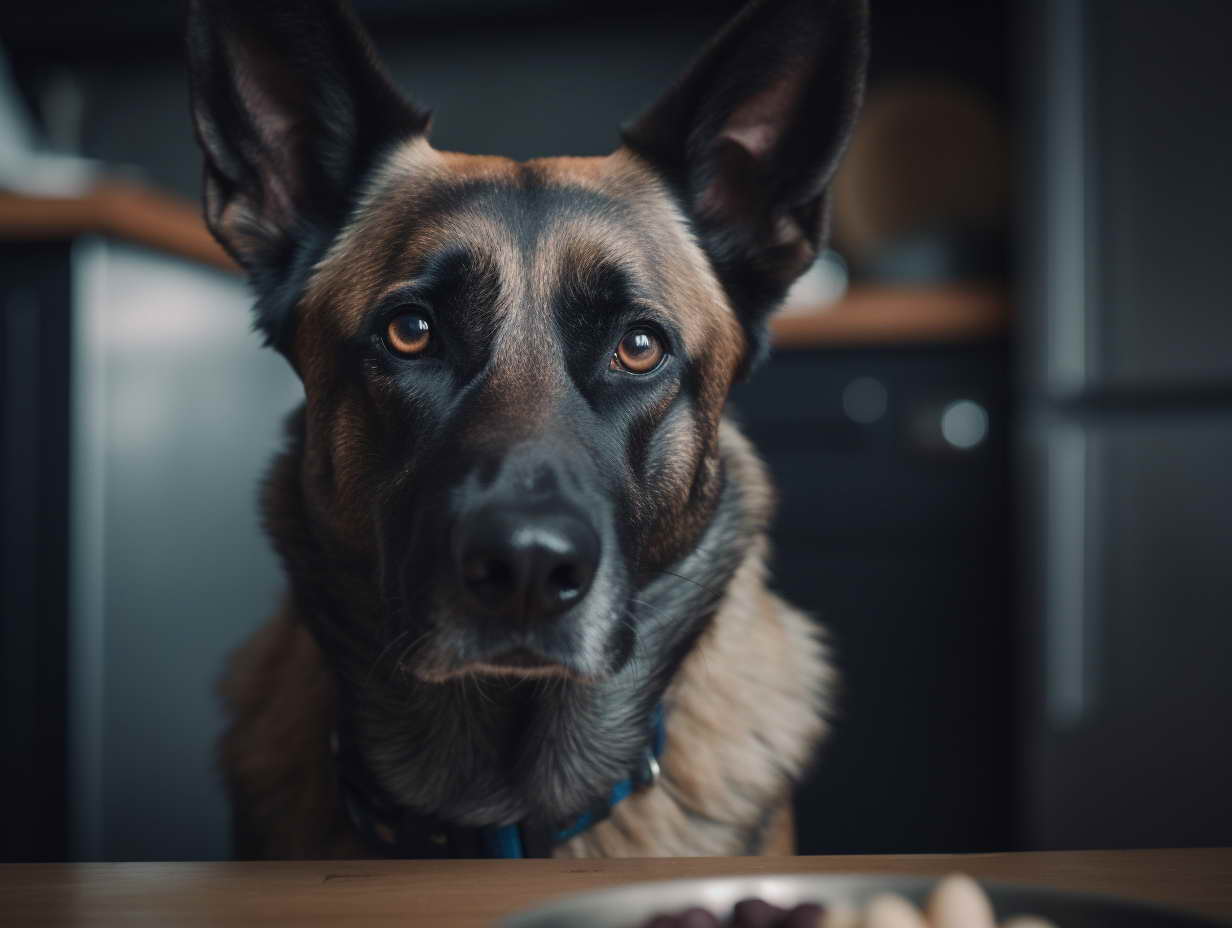
Desensitization and Counterconditioning Techniques
Desensitization and counterconditioning are powerful techniques used to modify your dog’s behavior and emotional response to triggers that elicit food aggression. By gradually exposing your dog to these triggers in a controlled and positive manner, you can help them develop new, more desirable associations and responses.
What is Desensitization?
Desensitization involves exposing your dog to the trigger of their food aggression in a gradual and controlled manner. The goal is to reduce their sensitivity and emotional response over time. Here’s how to approach desensitization:
- Identify Triggers: Determine the specific triggers that elicit your dog’s food aggression, such as approaching their food bowl or reaching for their food.
- Start at a Distance: Begin desensitization at a distance where your dog remains calm and relaxed. This might involve observing their behavior when someone is nearby, but not interacting with their food.
- Progress Gradually: Slowly decrease the distance between your dog and the trigger over multiple sessions, ensuring they remain comfortable and relaxed at each stage.
- Positive Reinforcement: Pair the presence of the trigger with rewards, such as treats or praise, to create positive associations and reinforce calm behavior.
Step-by-Step Desensitization Process
Desensitization should be approached systematically. Follow these steps to effectively desensitize your dog to their food aggression triggers:
- Identify the Trigger: Determine the specific trigger that causes your dog’s food aggression, such as a person approaching their food bowl.
- Set the Starting Point: Begin at a distance from the trigger where your dog remains calm and relaxed. This might be a few meters away.
- Present the Trigger: Gradually introduce the trigger in a controlled manner, ensuring your dog does not become anxious or aggressive.
- Monitor Your Dog’s Response: Observe your dog’s body language and behavior. If they remain calm, reward them with treats and praise.
- Gradually Decrease Distance: Over multiple sessions, gradually decrease the distance between your dog and the trigger, ensuring they remain relaxed and positively reinforced.
- Continue Reinforcement: Consistently reward your dog for calm behavior during each step of the desensitization process.
- Proceed at Your Dog’s Pace: Progress at a pace that suits your dog’s comfort level. Some dogs may require more time to desensitize than others.
Introduction to Counterconditioning
Counterconditioning involves changing your dog’s emotional response to the trigger by associating it with positive experiences. The aim is to replace fear, anxiety, or aggression with positive feelings. Follow these steps for effective counterconditioning:
- Create Positive Associations: Pair the presence of the trigger with highly desirable rewards, such as their favorite treats, toys, or praise.
- Start at a Comfortable Distance: Begin counterconditioning at a distance where your dog remains calm and relaxed, gradually decreasing the distance as they become more comfortable.
- Reward Calm Behavior: Whenever your dog exhibits calm behavior in the presence of the trigger, provide immediate rewards and praise to reinforce the positive association.
- Consistency is Key: Consistently repeat the counterconditioning exercises to strengthen the new positive association with the trigger.
- Avoid Overwhelming Your Dog: Be mindful not to progress too quickly or expose your dog to levels of the trigger that cause distress or trigger aggression.
By incorporating desensitization and counterconditioning techniques into your training regimen, you can help your dog develop more positive and relaxed responses to their food aggression triggers. Patience, consistency, and positive reinforcement are essential for successful behavior modification.
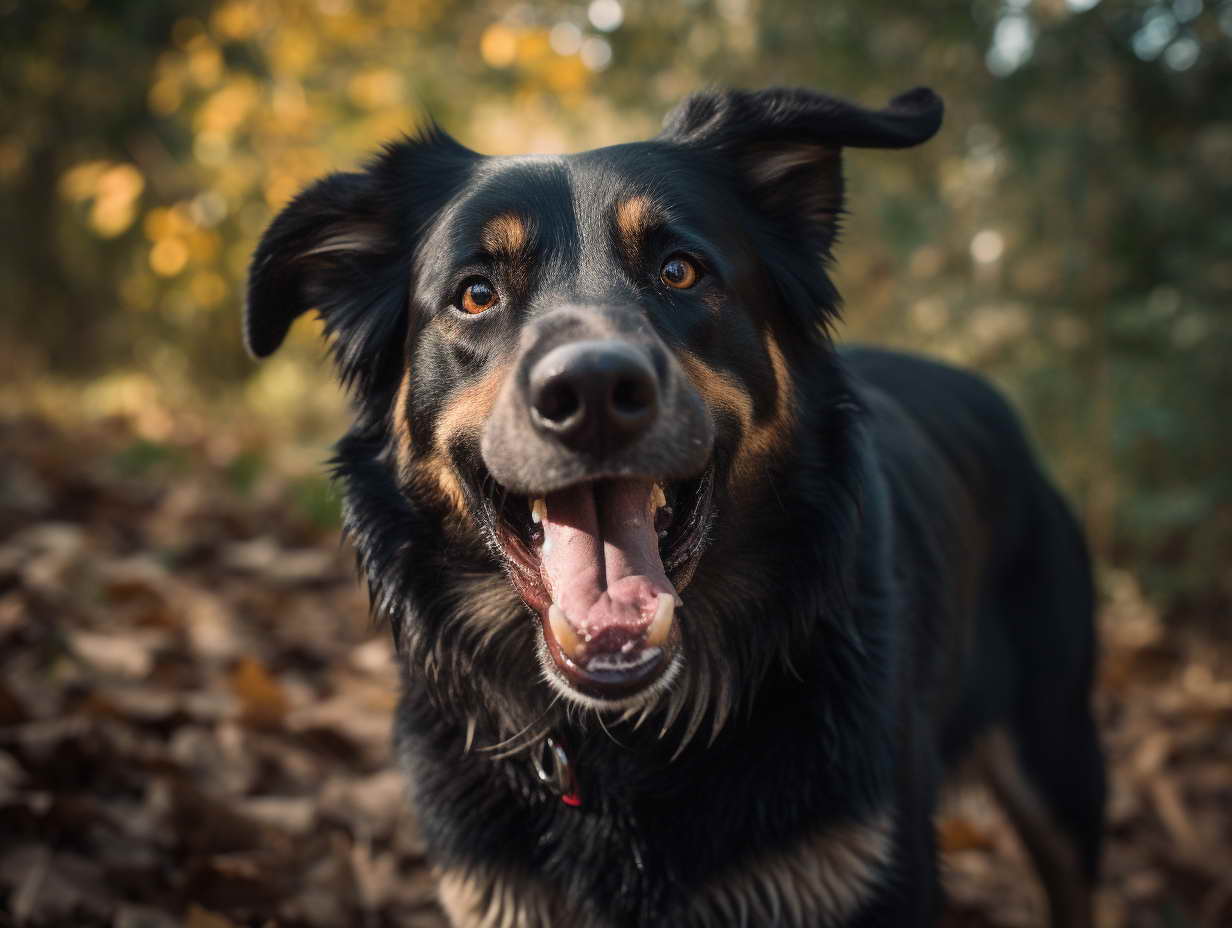
Positive Reinforcement Training
Positive reinforcement training is a highly effective approach to addressing food aggression in dogs. By using rewards and positive associations, you can encourage desired behaviors and create a harmonious feeding environment. This section will outline the key aspects of positive reinforcement training for food aggression.
Understanding Positive Reinforcement
Positive reinforcement involves rewarding your dog for exhibiting desired behaviors. By providing rewards, such as treats, praise, or playtime, you reinforce and increase the likelihood of those behaviors being repeated. It is important to focus on rewarding calm and non-aggressive behavior during feeding times.
Using Rewards and Treats
Selecting the right rewards and treats is crucial for positive reinforcement training. Here are some guidelines:
- High-Value Treats: Choose treats that your dog finds highly enticing and rewarding. These treats should be especially appealing to them and reserved for training sessions.
- Small and Bite-Sized: Opt for small, easily consumable treats that your dog can quickly consume without disrupting the training session.
- Varied Rewards: Use a variety of rewards, including verbal praise, gentle petting, or a favorite toy, in addition to treats. This keeps the training sessions engaging and rewarding for your dog.
Training Techniques for Food Aggression
Implement the following positive reinforcement training techniques to address food aggression:
- Targeted Training: Teach your dog basic obedience commands, such as “sit,” “stay,” or “leave it.” These commands help establish control and create a positive structure during feeding times.
- The reward for Calm Behavior: Reward your dog when they exhibit calm and non-aggressive behavior around food. For example, provide treats and praise when they wait patiently or allow you to approach their food bowl without displaying aggression.
- Gradual Exposure: Gradually introduce triggers that elicit food aggression, such as someone reaching towards their food bowl, while rewarding your dog for remaining calm and non-reactive.
- Consistency and Repetition: Consistently reinforce positive behaviors during feeding times, repeating the training exercises daily. Over time, your dog will associate these behaviors with rewards and learn to display them consistently.
Remember, positive reinforcement training focuses on rewarding desired behaviors and creating positive associations. By consistently rewarding calm and non-aggressive behavior during feeding, you can help your dog develop a more relaxed and positive attitude toward mealtime.
As you progress through the training, you may gradually reduce the frequency of treats and rewards while maintaining verbal praise and petting as ongoing positive reinforcement.
Seeking Professional Help
In some cases, seeking professional assistance may be necessary to effectively address severe food aggression issues in dogs. A qualified dog trainer or behaviorist can provide valuable guidance, expertise, and support throughout the training process. This section will guide you on when and how to seek professional help.
Identifying the Need for Professional Intervention
Consider seeking professional help for food aggression if:
- The severity of Aggression: Food aggression displays intense aggression, such as persistent biting or aggressive lunging, that poses a risk to the safety of other animals or people.
- Lack of Progress: Despite consistent efforts, you see little to no improvement in your dog’s food aggression behaviors over an extended period.
- Safety Concerns: Food aggression is escalating, and you are concerned about the safety of yourself, family members, or other pets in the household.
- Multiple Behavioral Issues: Food aggression is accompanied by other significant behavioral problems, such as aggression in other contexts or separation anxiety.
Choosing a Qualified Dog Trainer or Behaviorist
When seeking professional help, it is crucial to choose a qualified dog trainer or behaviorist experienced in addressing food aggression. Consider the following factors when selecting a professional:
- Certifications and Credentials: Look for professionals who hold certifications or have undergone specialized training in animal behavior, such as Certified Professional Dog Trainers (CPDT) or Certified Applied Animal Behaviorists (CAAB).
- Experience with Food Aggression: Ensure the professional has specific experience and a successful track record in dealing with food aggression cases.
- Positive Reinforcement Approach: Seek professionals who employ positive reinforcement-based training methods rather than punitive or aversive techniques.
- Recommendations and Reviews: Seek recommendations from trusted sources, such as veterinarians or other dog owners who have successfully resolved food aggression issues with professional assistance.
- Initial Consultation: Schedule an initial consultation to discuss your dog’s specific needs and assess the professional’s understanding, approach, and compatibility with you and your dog.
Professional intervention can provide you with a customized training plan, expert guidance, and ongoing support tailored to your dog’s unique food aggression issues. They can assess the situation, identify underlying causes, and develop a comprehensive behavior modification program to address the problem effectively.
Remember, seeking professional help is an investment in your dog’s well-being and safety, as well as the overall harmony within your household. A qualified professional can work with you to ensure a safe and successful resolution to your dog’s food aggression.
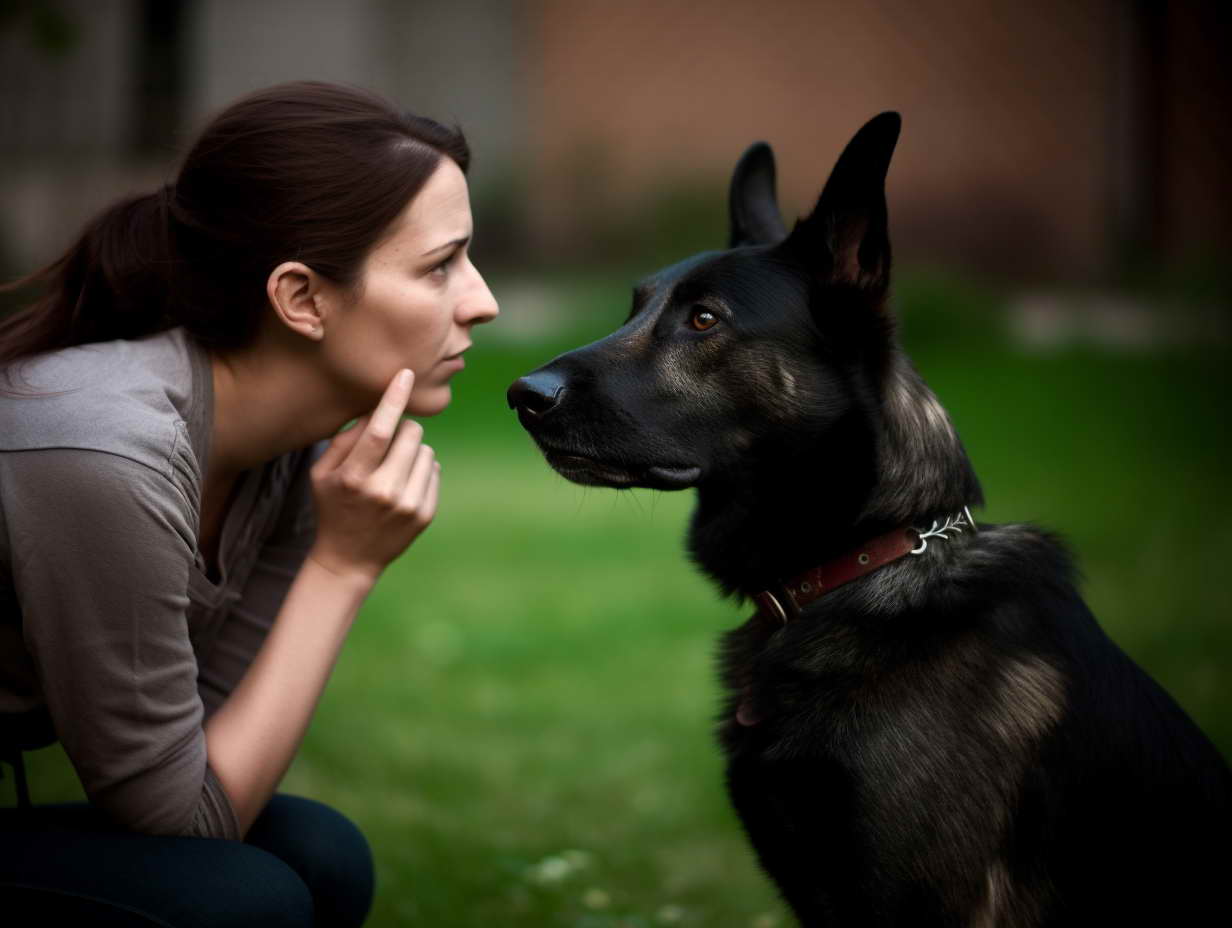
Preventing Future Food Aggression
Prevention is key to maintaining long-term success in managing food aggression. By implementing proactive measures and promoting positive associations with mealtime, you can prevent the development or recurrence of food aggression in your dog. This section will provide you with preventive measures to ensure a peaceful feeding routine.
Maintaining a Structured Feeding Schedule
Establishing and maintaining a structured feeding schedule can contribute to a calm and predictable mealtime routine for your dog. Consider the following guidelines:
- Consistent Feeding Times: Feed your dog at the same times each day, following a consistent schedule. This helps your dog anticipate and prepare for mealtime, reducing anxiety and the potential for food aggression.
- Time-Limited Meals: Provide your dog with a specific duration to finish their meals. If your dog doesn’t finish their food within the designated time, remove the food. This prevents the development of resource-guarding behaviors.
Promoting Positive Associations with Mealtime
Creating positive associations with mealtime helps foster a relaxed and non-aggressive attitude towards food. Here are some strategies to promote positive associations:
- Feeding Rituals: Establish calming rituals before feeding, such as gentle petting or engaging in a brief play session. These rituals can help your dog associate mealtime with positive experiences.
- Interactive Feeding: Incorporate interactive feeding methods, such as food puzzle toys or slow-feeders, to engage your dog mentally and provide an enriching mealtime experience.
- Hand Feeding: Occasionally hand feed your dog, offering small portions of their meal from your hand. This promotes a positive bond and reinforces the idea that you are the provider of food.
- Mix in High-Value Treats: Occasionally mix high-value treats or small amounts of wet food into your dog’s regular meals. This adds variety and creates positive anticipation during mealtime.
By maintaining a structured feeding schedule and promoting positive associations with mealtime, you can prevent the development of food aggression and promote a calm and harmonious feeding routine for your dog.
It’s important to note that prevention strategies should be implemented consistently and reinforced over time to ensure their effectiveness. By creating a positive and stress-free feeding environment, you can set the foundation for a healthy and relaxed relationship with food for your dog.
Case Studies and Success Stories
In this section, we will explore real-life case studies and success stories of dogs who have overcome food aggression. These stories provide valuable insights and inspiration, demonstrating that with dedication, proper training, and patience, food aggression can be successfully managed and resolved.
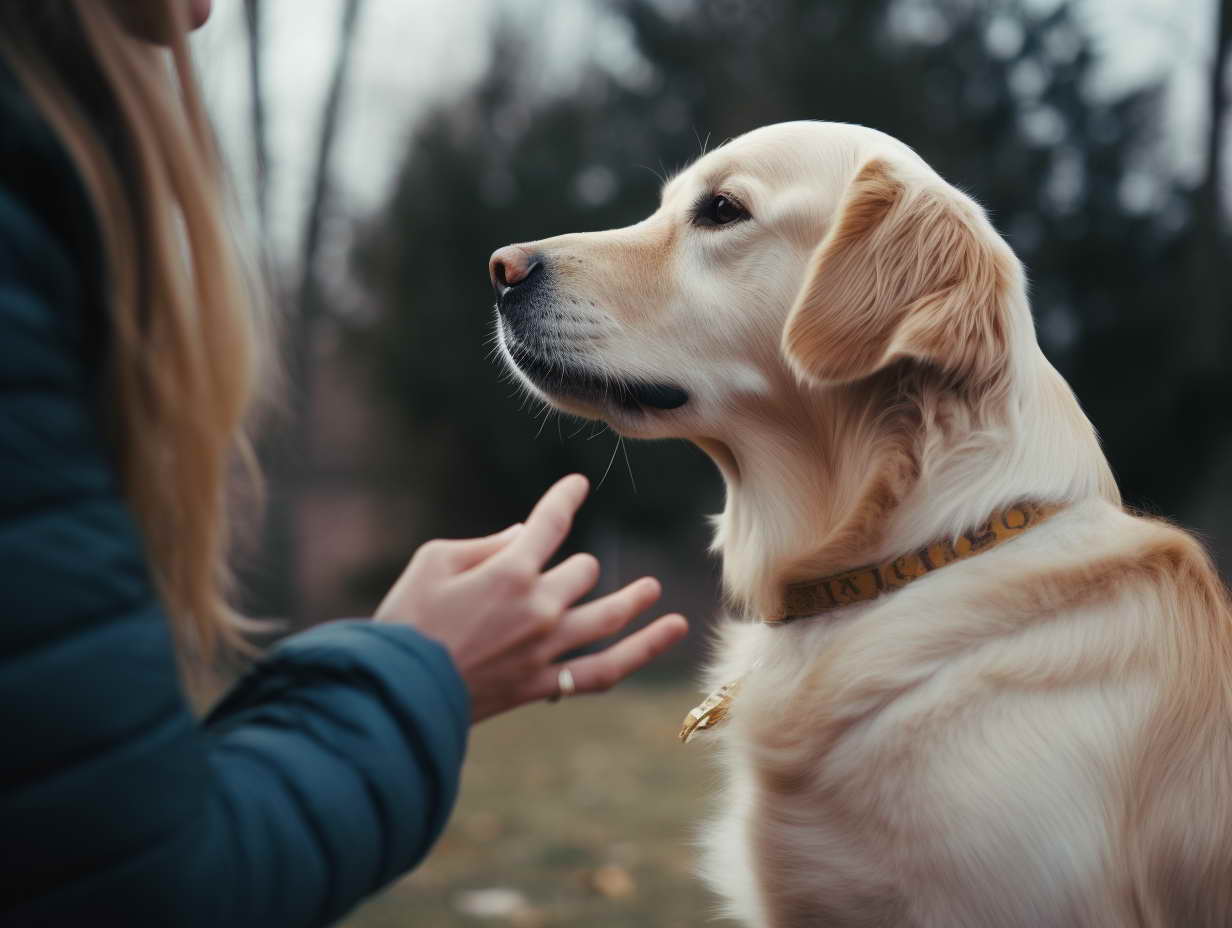
Case Study 1: Max’s Journey to Peaceful Mealtimes
Max, a 3-year-old Labrador Retriever, exhibited severe food aggression. He would growl, snap, and guard his food bowl, making it impossible for his owners to approach or feed him without fear. Max’s owners sought the assistance of a professional dog trainer experienced in addressing food aggression.
The trainer implemented a comprehensive training plan for Max, focusing on desensitization and positive reinforcement techniques. Over several weeks, Max was gradually exposed to triggers associated with food aggression in a controlled and positive manner. His owners consistently rewarded calm behavior and provided high-value treats during feeding sessions.
Through the dedicated efforts of his owners and professional guidance, Max showed remarkable progress. His food aggression decreased significantly, and he became more relaxed and receptive during mealtimes. With continued training and reinforcement, Max eventually overcame his food aggression, allowing his owners to safely handle his food and enjoy peaceful mealtimes together.
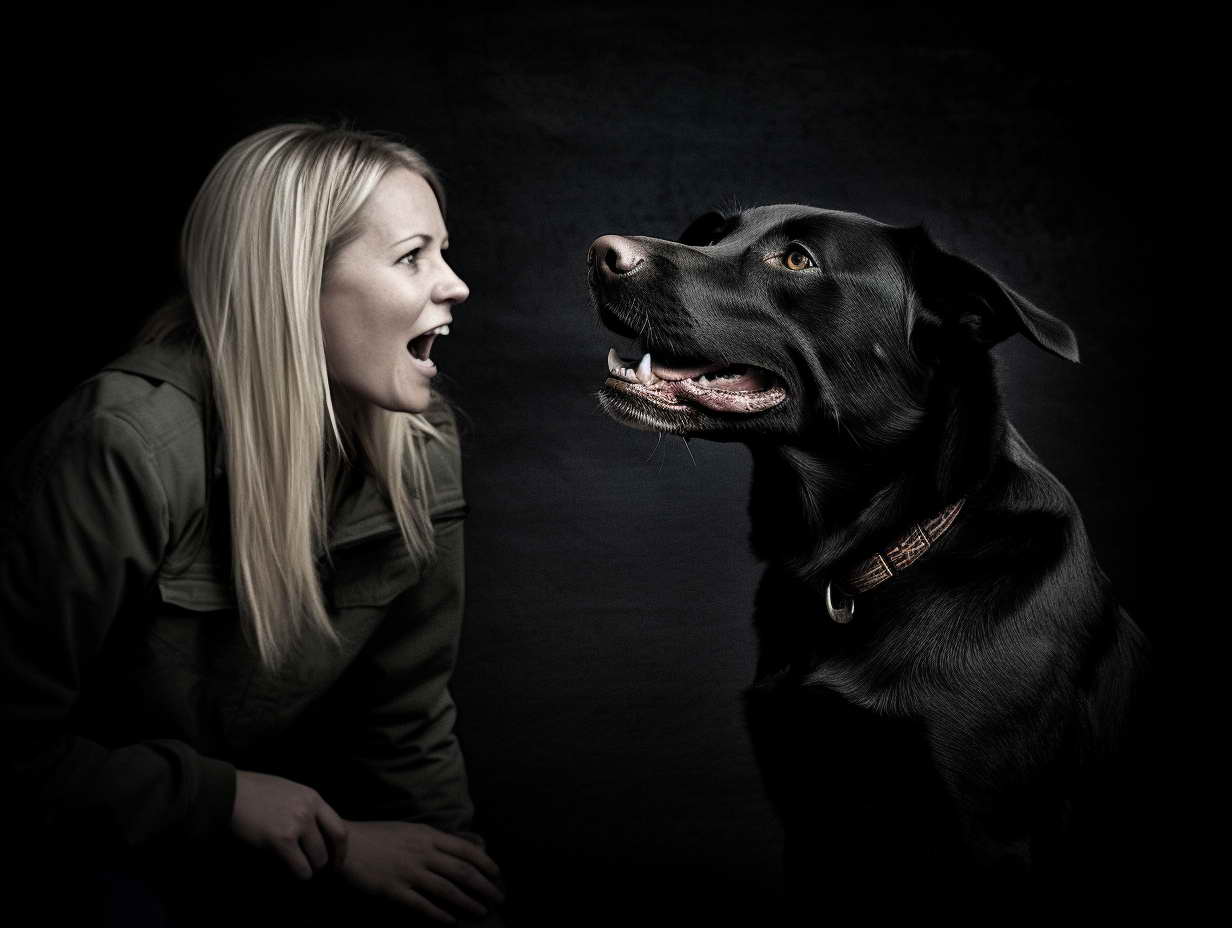
Case Study 2: Bella’s Journey of Trust and Confidence
Bella, a 2-year-old mixed breed, developed food aggression after experiencing food scarcity during her early years. She would fiercely guard her food, displaying intense aggression towards anyone who approached her while eating. Her owners were concerned for the safety of their family members and sought professional help.
Under the guidance of a skilled behaviorist, Bella’s training plan focused on counterconditioning and building trust. Her owners implemented a gradual approach, starting with positive associations and rewards during mealtime. Bella was taught to associate approaching humans with positive experiences, such as receiving treats or gentle petting.
With time and consistent training, Bella’s behavior began to change. She became more relaxed and trusting during meals, allowing her owners to approach and handle her food without aggression. Bella’s journey was a testament to the transformative power of patience, positive reinforcement, and building trust.
These case studies highlight the success that can be achieved through dedicated training and behavior modification techniques. Each dog’s journey is unique, and the key to success lies in tailoring the training approach to their individual needs.
By learning from these success stories, dog owners can gain inspiration and insights into the process of managing and resolving food aggression. With the right approach, patience, and professional guidance, dogs like Max and Bella can overcome food aggression and enjoy peaceful mealtimes with their loving families.
Frequently Asked Questions (FAQs)
How common is food aggression in dogs?
Food aggression is relatively common among dogs, and it can occur in various breeds and sizes. However, the severity of food aggression may vary.
Can food aggression be eliminated?
While the complete elimination of food aggression is not always guaranteed, it is possible to manage and significantly reduce food aggression through consistent training and behavior modification techniques.
Can food aggression develop suddenly?
Food aggression can develop suddenly in dogs, particularly when there is a change in their living situation or routine. It is important to address the issue promptly to prevent it from escalating.
Is punishment an effective method to address food aggression?
Punishment is not recommended when dealing with food aggression as it can worsen the problem and potentially lead to more aggressive behavior. Positive reinforcement and behavior modification techniques are more effective.
Can a professional dog trainer help with food aggression?
Yes, a professional dog trainer or behaviorist can provide valuable guidance and support in addressing food aggression issues. They can assess the situation, develop a customized training plan, and monitor progress.
How long does it take to see improvements in food aggression?
The timeline for improvement in food aggression varies depending on the dog’s temperament, history, and the severity of the aggression. Consistent training, patience, and positive reinforcement are key factors in achieving progress.
Conclusion
Food aggression in dogs can be a challenging issue, but with the right knowledge and training techniques, it is possible to create a safe and peaceful feeding environment. By understanding the causes, implementing positive reinforcement training, and seeking professional help when needed, you can help your dog overcome food aggression and foster a healthy relationship.
Remember, addressing food aggression dog training requires patience and consistency. With your dedication and the guidance provided in this Food Aggression Dog Training Guide, you can help your dog become a happier and more relaxed eater.
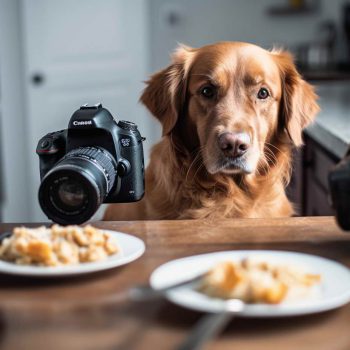
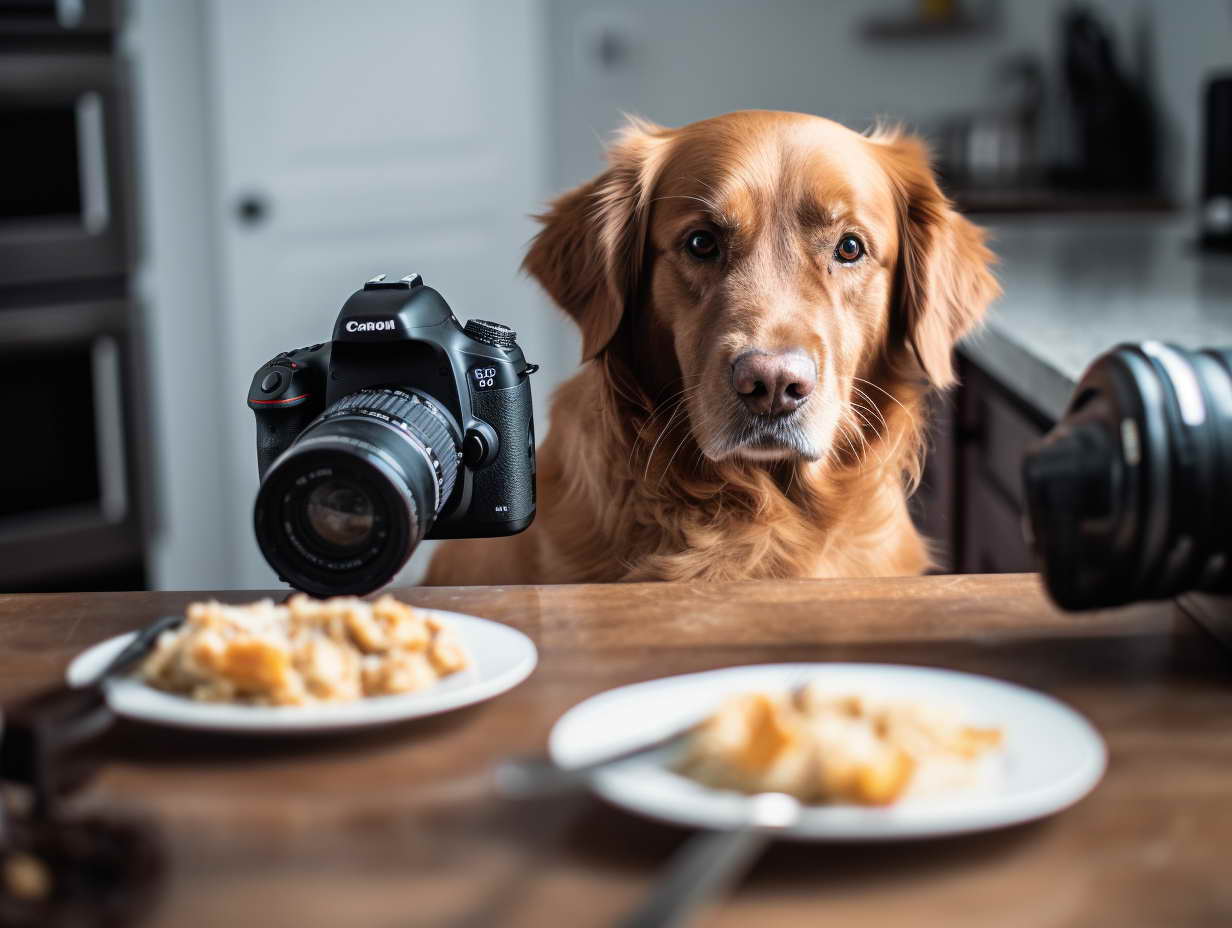
Leave a Reply